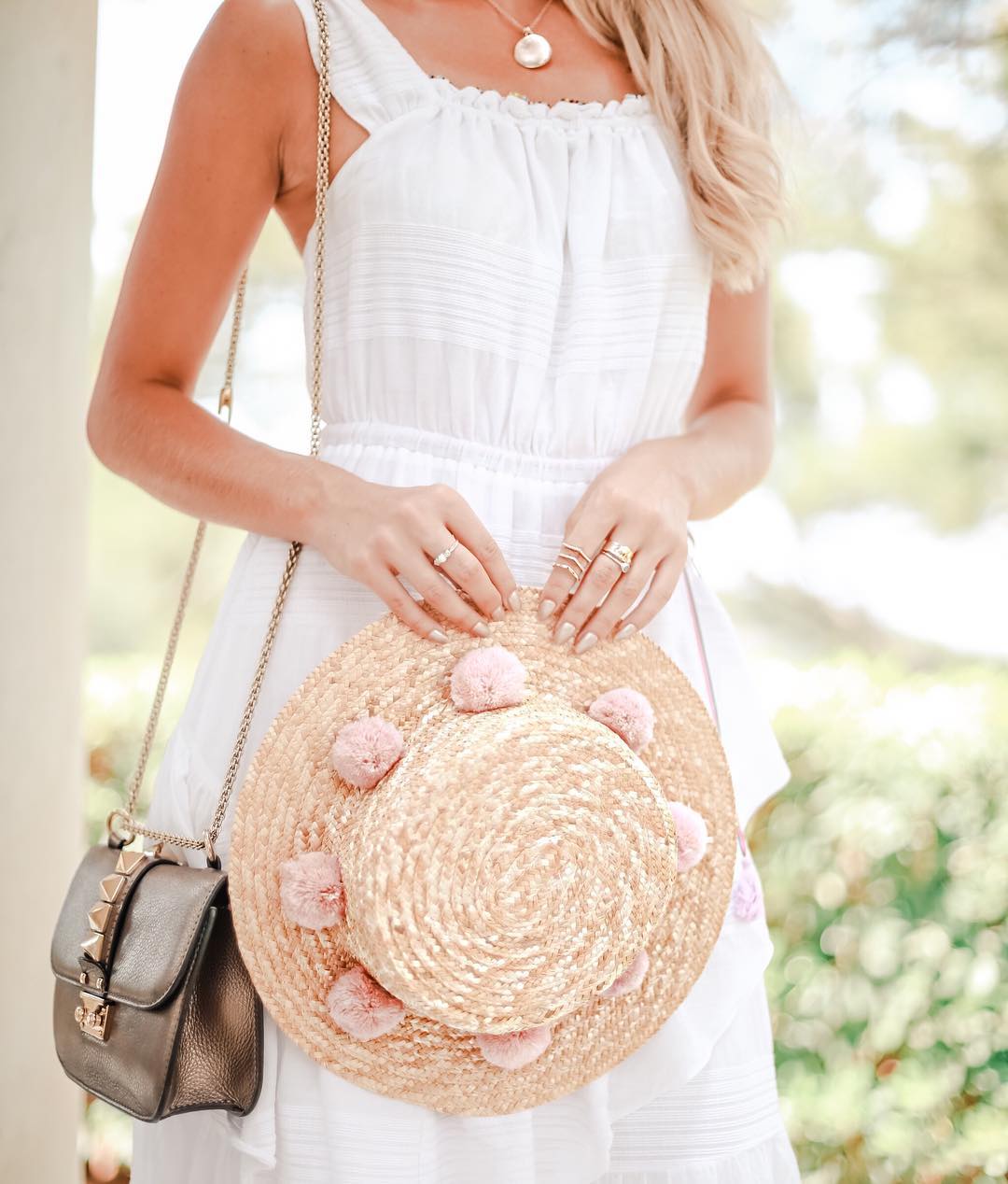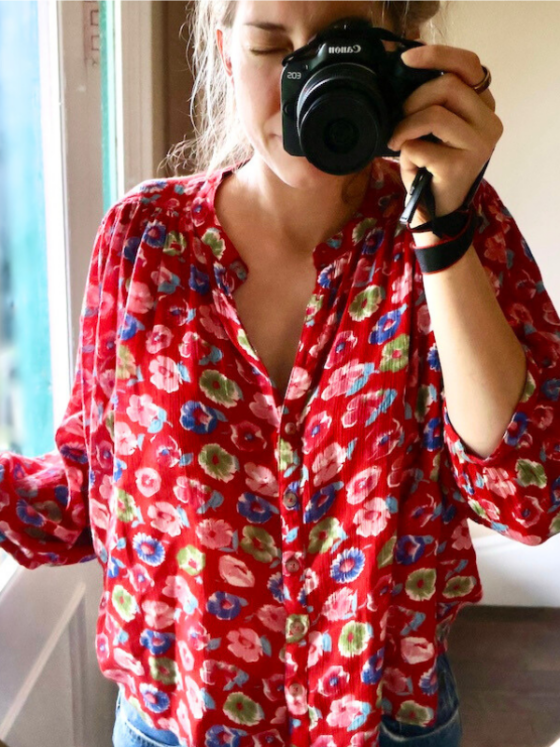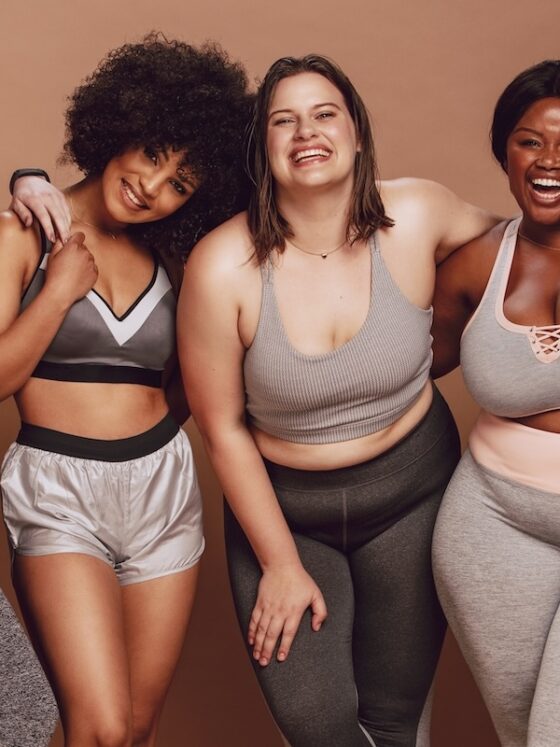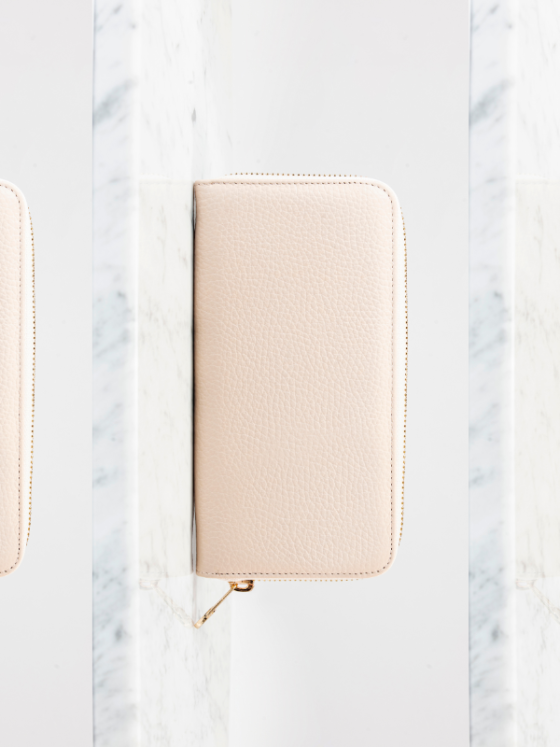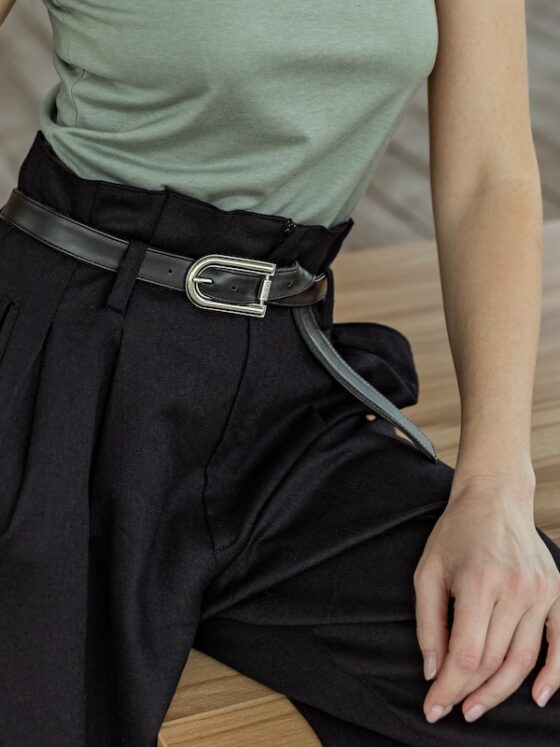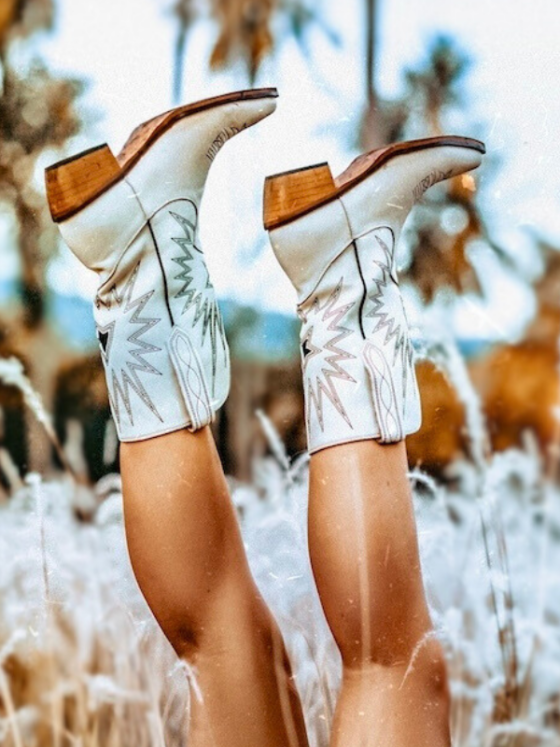What Is Sustainable Clothing and How Can You Find It?

This post contains affiliate links, so if you make a purchase I may earn a commission at no extra cost to you. Learn more here.
How would you describe the perfect piece of clothing? You might think of something that suits your style, fits well, feels comfortable, and is high-quality—something that makes you look and feel great. What’s often less front of mind is that garment’s story before it got to you. But when sustainability becomes a core factor alongside those other qualities, it adds a whole new layer of satisfaction to the shopping process. So, what exactly is sustainable clothing and how can you add it to your closet?
What is Sustainable Clothing?
At the highest level, “sustainable clothing” refers to garments manufactured in a way that minimizes their environmental impact and promotes ethical labor practices throughout their lifecycle. This involves steps like using eco-friendly materials, manufacturing sustainably and responsibly, and upholding fair labor standards. But, just like the concept of “sustainability” itself, “sustainable clothing” is a spectrum.
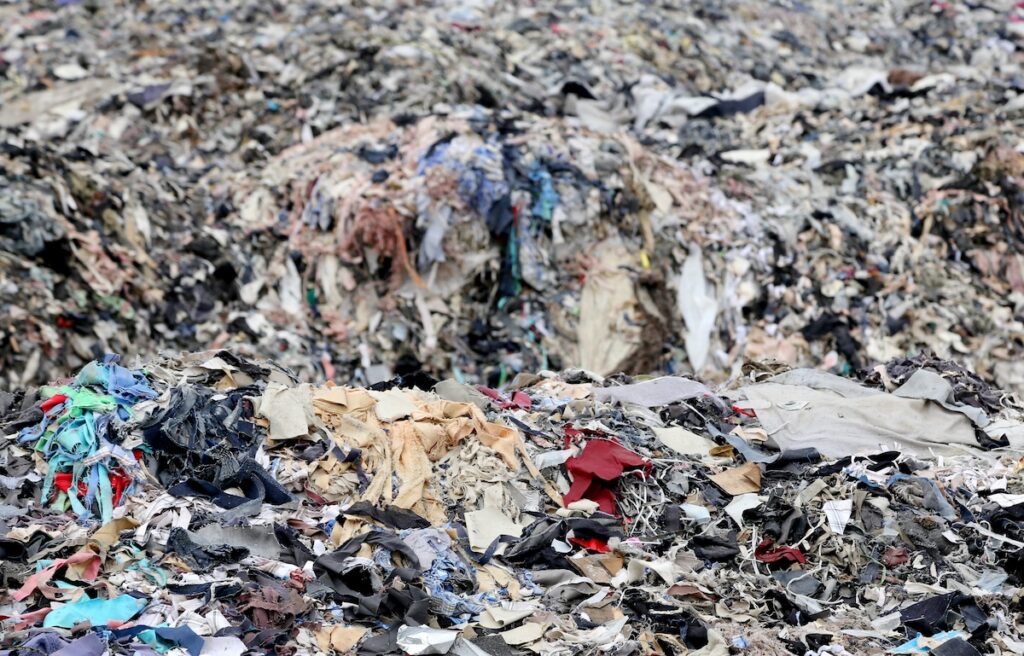
On the most unsustainable end of the spectrum sits “fast fashion,” which is the rapid production of very inexpensive clothing to keep up with the latest trends. Not only are clothes cranked out at record speed, but about 60% of fast fashion garments end up in a landfill or are incinerated every single year.
Here’s an example of just how insane the fast fashion industry is: McKinsey reports that Shein, a huge brand in fast fashion, “consistently churns out up to 10,000 new designs a day.” Not a great look, everybody. This skit from SNL perfectly satirizes the topic, while not-so-subtly referencing brands like Shein and Temu.
The extremes of fast fashion aside, most clothing you encounter today is decidedly not sustainable; about 2/3 of textiles are made partly or entirely out of plastic, and the fashion industry is notoriously slimy when it comes to both planet and workers.
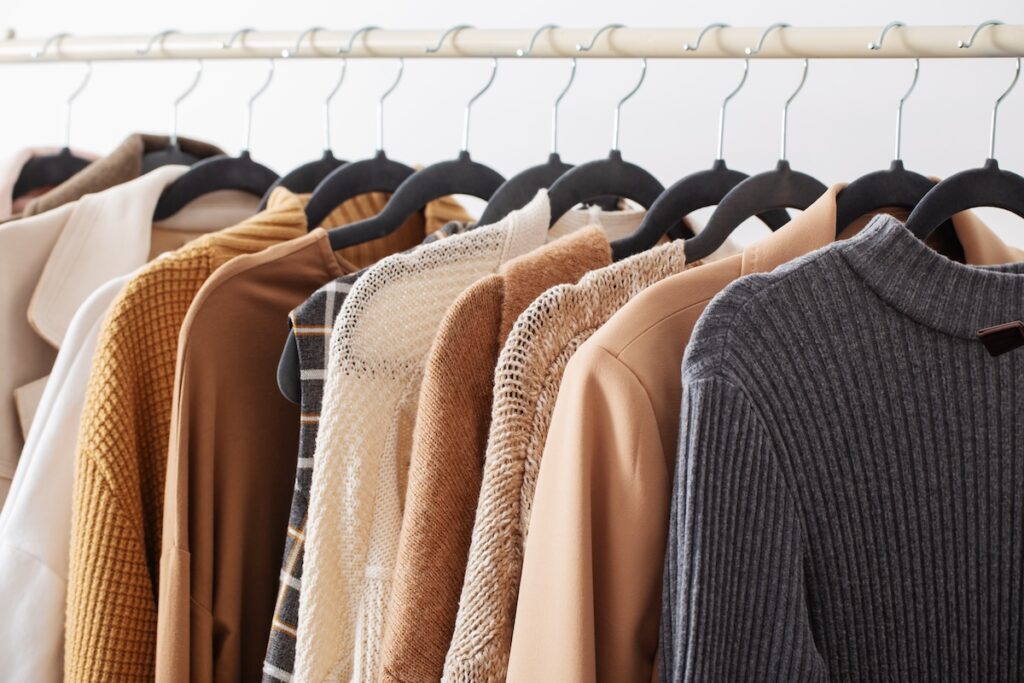
Then we have the other end of the spectrum. In the strictest sense, the single most sustainable clothing choice would be not to purchase new clothing at all, or at least to buy only what you truly need. It boils down to the fact that less is almost always more when it comes to sustainability. This is just food for thought, not a suggestion of what’s realistic.
The next most sustainable option is to buy clothing that’s made slowly, thoughtfully, ethically, and with earth-friendly materials. If that sounds like a tall order, take heart! The goal is better purchases, not perfect ones. And there are more options than ever for finding clothing that aligns with some or all of these values. So with that, here’s…
How to Add Sustainable Clothing To Your Closet
No matter your style, budget, time, or closet space, you can find fun ways to embrace sustainable clothing. Here are four different approaches to try:
1. Buy from Sustainable Clothing Brands
One clear way to incorporate more sustainable clothing into your closet is to buy it from sustainable clothing brands. You can buy it directly from your brand of choice, or from a marketplace that brings together sustainable options from many brands, like Made Trade.
A common complaint when it comes to buying sustainable clothing first-hand is that it tends to run expensive. But there are a few considerations here. First, our expectations about clothing prices are often skewed by fast fashion, which sets an unfair standard. Second, high-quality clothing tends to last much longer than something cheaply made, so it may actually be much less expensive in the long run. And third, not all sustainable clothing is super pricey. (See Yes Friends below!)
Here’s what to look out for when shopping for sustainable clothing:
Materials
There are a few general rules of thumb for choosing eco-friendly materials. (This approach felt more practical and memorable versus listing specific fabrics to look for, as the nuances of fabric sustainability can be complex and burdensome.)
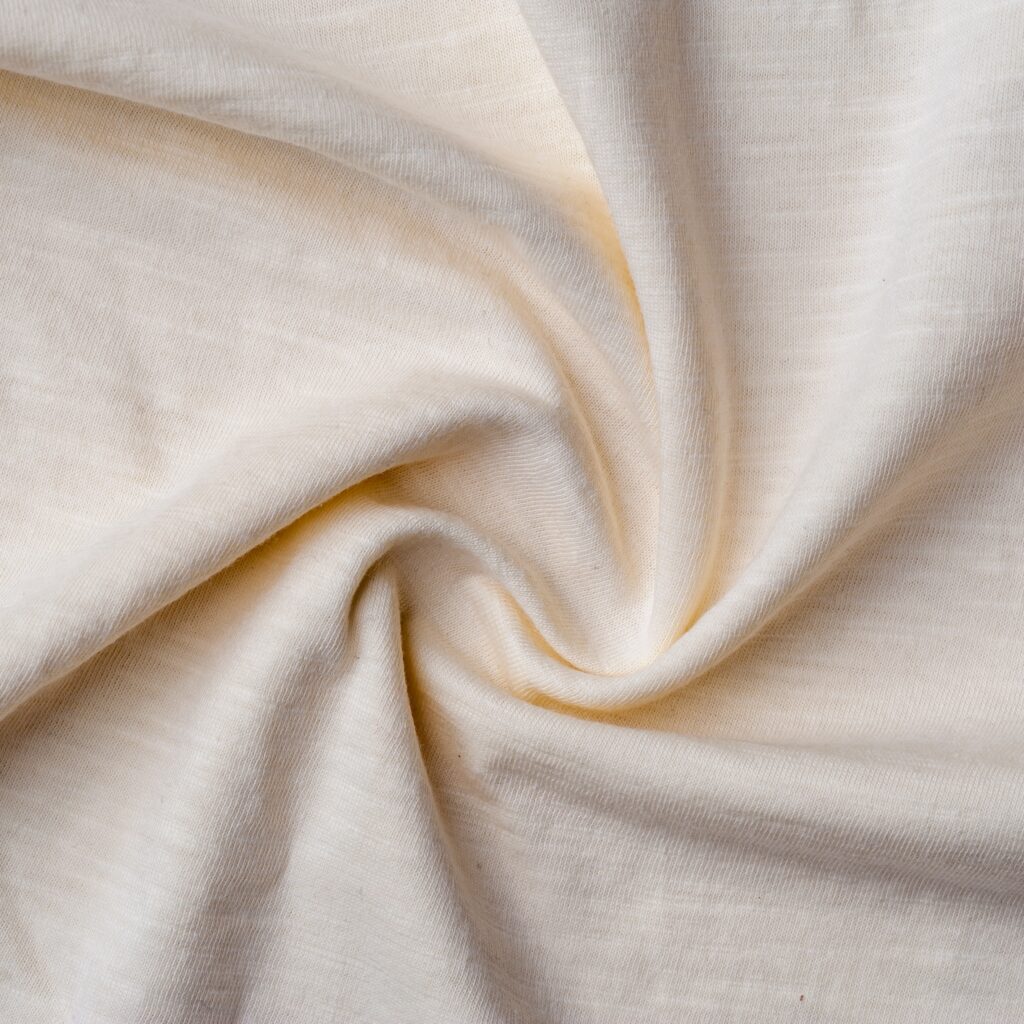
- Opt for natural over synthetic fibers. Fabrics made from cotton (see organic note below), hemp, or linen are generally more eco-friendly than plastic-based fabrics like nylon, polyester, or acrylic.
- Seek out recycled polyester or recycled nylon instead of virgin fabrics if you do need something made from synthetic fibers (like activewear, outerwear, or swimwear). Or better yet, consider buying second-hand to reduce the demand for new plastic-based fabrics.
- Choose organic over conventional options. Cotton is a prime example of this: conventional cotton is famously water- and pesticide-intensive to grow, while organic cotton is widely acknowledged as a more earth-friendly option. Organic hemp and linen are also gentler on the environment.
Production Methods
In a perfect world, a sustainable clothing supply chain would feature eco-friendly materials, ethical labor, waste reduction (like upcycling fabric scraps), non-toxic dyes, renewable energy, and sustainable water management. But of course, it’s hard and expensive to check all those boxes. Clothing brands should at least be forthcoming about their production processes on their websites, and a lack of available information may be a red flag. For an excellent resource that takes the heavy-lifting out of this research, check out Good On You!
Packaging & Shipping
It’s such a bummer to order something that’s been sustainably marketed, only to receive it and find that it’s wrapped in all sorts of plastic. Holistically sustainable clothing brands will use eco-conscious packaging, which ideally means ditching plastic altogether, but at a minimum should involve only fully recyclable materials.
Some Sustainable Clothing Brands for Your Perusal
This is a tiny list of some wonderful, ethical brands. It’ll help give a sense of the types of brands to look out for. As aforementioned, Good On You is a wonderful, robust database if you’re looking for something specific or for a bigger collection of sustainable clothing brands to browse through.

A super-ethical UK brand that offers remarkably affordable organic cotton clothing.

A Swedish brand that makes upscale ethical & sustainable clothing in uniquely chic designs.

An American brand with a wide range of sustainable, comfortable basics and workout wear.

A Canadian brand that offers lots of sustainable outdoorsy clothing and plants 10 trees per purchase.
2. Get Thrifty
Thrifting is a fun way to shop more sustainably. Not only does it reduce demand for resource-intensive new clothing, but it can help divert textile waste from landfills. If you want a more curated selection of items than an average thrift store offers, try your local consignment shop. It is amazing the treasures to be found, often at a fraction of the price you’d by them for new.
If you’re ready to explore, start with local thrift or consignment stores to avoid adding to emissions from shipping. But if you’re interested in the online route, check out ThredUp (huge selection), Poshmark (buy directly from individual sellers), and TheRealReal (luxury clothes and accessories).
3. Rent Clothing
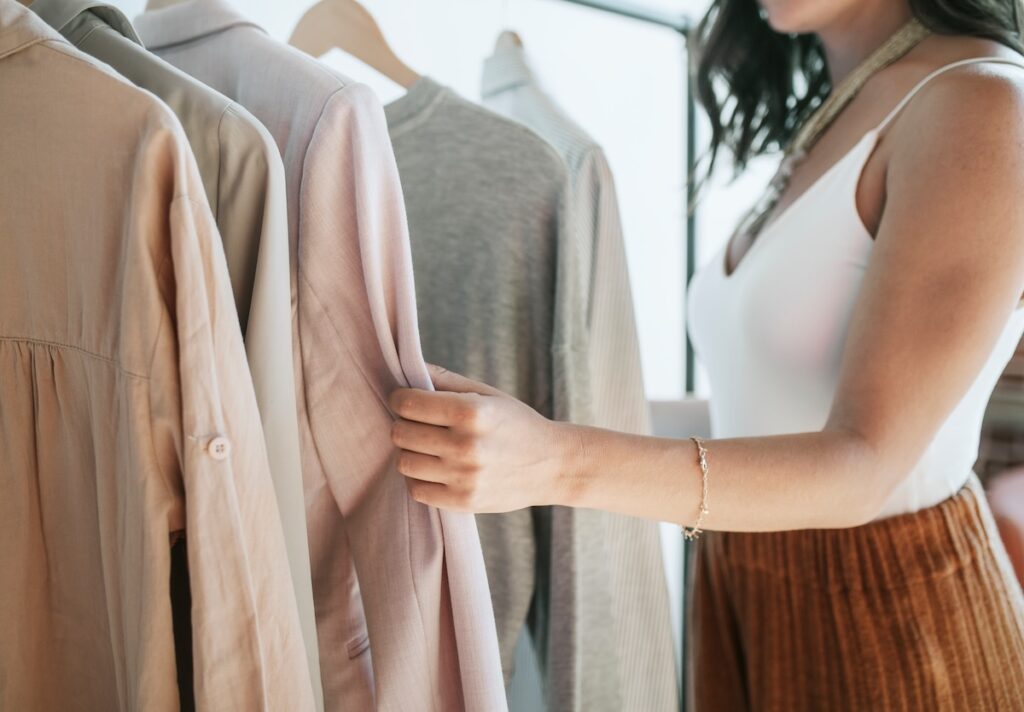
A nice alternative to purchasing new clothing is to rent it. This holds especially true when you’ve got a special event coming up: rather than purchase finery you’re only realistically going to wear once, rent something that’s exactly perfect for that one occasion. It’s freeing and stylish and fun! It’s also a great solution for life stages like pregnancy or for travel, when the specific climate and style might be fleeting.
Clothing rental is not an environmentally perfect solution given all the shipping involved, but it still means less new production and fewer landfilled items. Two of the most popular rental companies are Rent the Runway and Nuuly.
4. Sew Your Own Clothing
I humbly offer this solution as someone who has never sewn her own clothing, but who has always admired the craft. The need for time, skill, and a sewing machine are real barriers, but once those have been overcome the sky is the limit. Not only can you make anything your heart desires – in any shape, size, or color – but you can repair or modify existing items, which at the end of the day is the heart of sustainable clothing.
